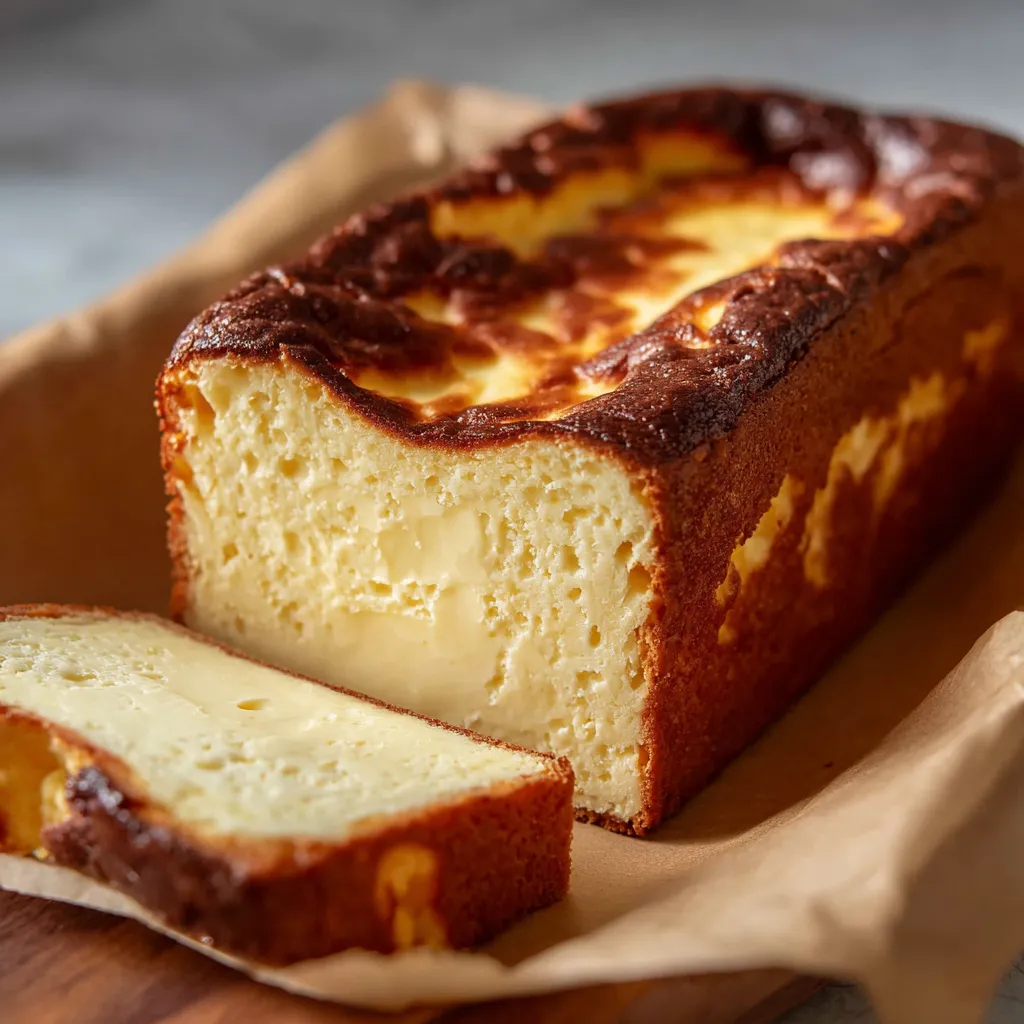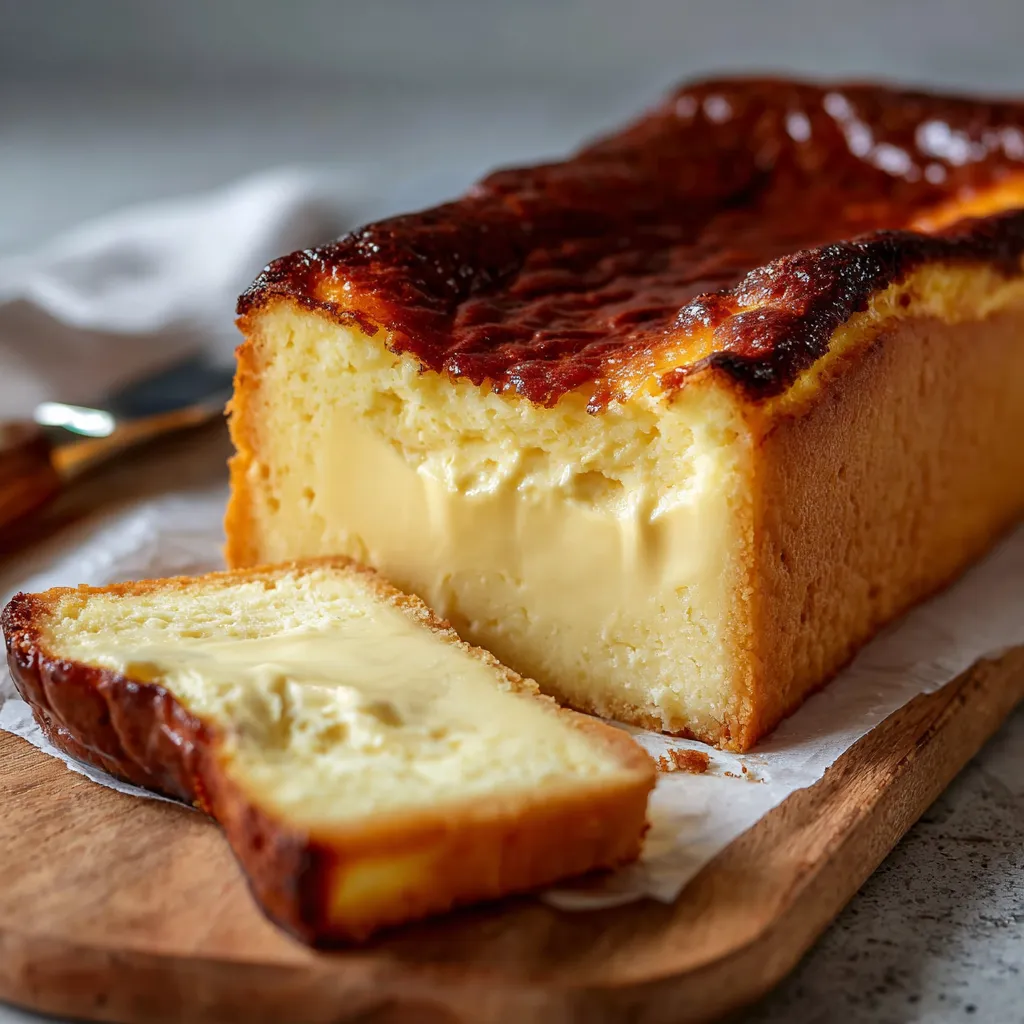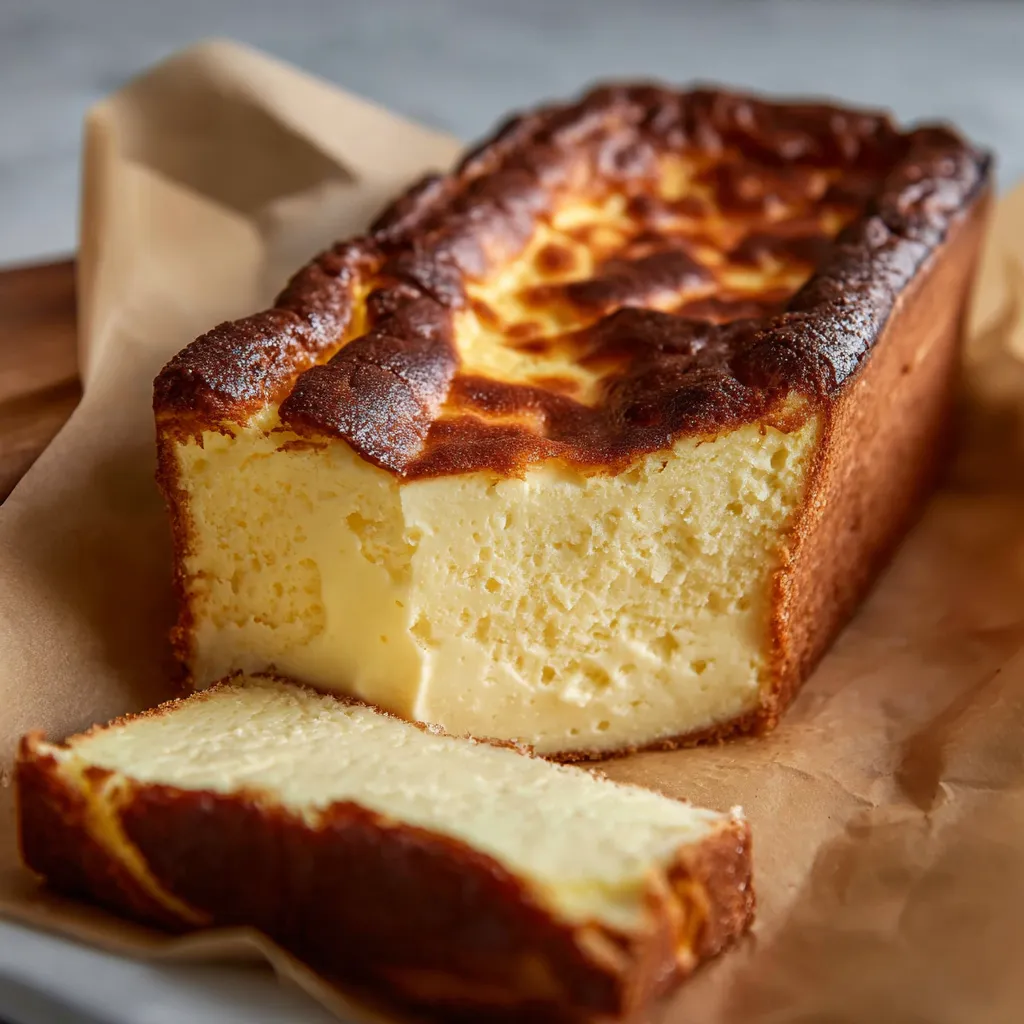 Pin it
Pin it
Burnt Basque cheesecake in a loaf pan is the dessert I lean on for both special celebrations and those nights when I crave something showstopping yet fuss free. It has that signature caramelized top with a creamy almost custardy center. What sets this variation apart is the fact you do not need a fancy pan or tricky water bath. Just a basic loaf pan pull it hot from the oven and you are greeted by a rustic crackly cheesecake that tastes decadent but is surprisingly easy to master.
When I first tried this version my guests could not believe how little effort it took for results so impressive—there were no crumbs left behind it always disappears fast
Ingredients
- Cream cheese: full fat for the ideal tang and creamy texture always use block style for best results
- Granulated sugar: brings out sweetness while balancing the tang in the cheese opt for fine sugar so it dissolves quickly
- Eggs: room temperature for the custard like texture always use large eggs for consistency
- Heavy cream: makes the cake ultra rich and smooth look for cream without added thickeners
- Vanilla extract: boosts the aroma use pure vanilla for the best flavor
- Salt: just a pinch heightens all the flavors a fine sea salt works best
- All purpose flour: a touch helps set the structure sift before adding to avoid lumps
Step-by-Step Instructions
- Prep the Loaf Pan:
- Line your loaf pan with parchment paper making sure there is enough overhang along the sides so you can lift the cake out easily later this step prevents sticking and encourages even baking
- Beat the Cream Cheese and Sugar:
- Use a large mixing bowl to beat softened cream cheese and granulated sugar together continue mixing until the blend looks fluffy and no lumps remain at this stage you are building a smooth base that defines the texture
- Add the Eggs:
- Crack in the eggs one at a time mix each in fully before adding the next this ensures a stable silky batter and keeps the cake tender
- Incorporate Cream Vanilla and Salt:
- Pour in the heavy cream and add the vanilla extract along with a pinch of salt beat until everything is evenly blended the batter should look luscious and pourable
- Fold in the Flour:
- Sift the flour directly into the bowl fold gently using a spatula just until there are no visible streaks this step keeps the texture light and prevents overmixing
- Fill the Pan and Remove Air Bubbles:
- Scrape the batter into your lined loaf pan give the pan a couple of light taps on the counter this helps air bubbles surface and pop so your cheesecake bakes evenly
- Bake Until Burnished and Wobbly:
- Move the pan to your preheated oven bake at four hundred degrees Fahrenheit for forty to forty five minutes you are looking for a deeply golden top with a jiggly center that just holds its shape
- Cool and Chill Before Serving:
- Let the baked cheesecake cool fully at room temperature set it in the fridge for at least four hours overnight if you can resist slicing the chill gives it the classic Basque creaminess
 Pin it
Pin it
Cream cheese is the star here I always reach for good quality when making this cake the first time I baked it for my mom she called it the best cheesecake she had ever eaten and now asks for it each birthday
Storage Tips
Keep the cheesecake wrapped tightly or covered in the loaf pan and store in the refrigerator it will stay fresh for up to five days The flavors actually deepen as it chills For longer storage wrap individual slices and freeze for up to one month thaw in the fridge overnight before enjoying
Ingredient Substitutions
If you need a lighter option you can use reduced fat cream cheese but the result will be less rich For a gluten free cake swap the all purpose flour for a one to one gluten free blend The flavor will still be fantastic For a different twist stir in a bit of citrus zest or try almond extract instead of vanilla
Serving Suggestions
This cheesecake shines when served plain or dusted with a light sprinkle of powdered sugar For something extra pair with fresh berries or a drizzle of berry compote A spoonful of whipped cream on the side also never hurts Guests always go back for seconds
Cultural and Historical Context
Burnt Basque cheesecake comes from the Basque region in Spain where it was invented in the late twentieth century It was designed to be rustic intentionally burnt on top with no crust and a gooey center The dramatic look and simple process helped it quickly become a favorite in bakeries worldwide
 Pin it
Pin it
This showstopper cheesecake is sure to impress yet is so simple you will want to bake it again and again Serve chilled and enjoy every creamy bite
Frequently Asked Questions
- → Why is the top of Basque Cheesecake burnt?
The high baking temperature caramelizes the exterior, creating a signature dark, flavorful crust while keeping the inside moist.
- → Can I use a different pan size?
A loaf pan creates a compact shape, but you can use other pans; just adjust baking time and check for doneness.
- → How should I store leftovers?
Cool completely, wrap tightly, and refrigerate. Enjoy within 3-4 days for best texture and flavor.
- → Do I need to use full-fat cream cheese?
Full-fat gives the richest flavor and texture, but lower fat versions may yield a slightly less creamy result.
- → Is it necessary to chill before serving?
Chilling allows the cheesecake to set fully and develop its dense, creamy texture and complex taste.
